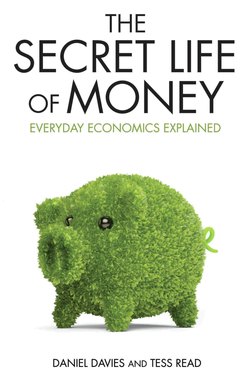Читать книгу Secret Life of Money - Everyday Economics Explained - Daniel Davies - Страница 10
На сайте Литреса книга снята с продажи.
ОглавлениеIF PAYDAY LENDERS’ INTEREST RATES ARE SO HIGH, WHY DON’T THEY OWN THE ENTIRE WORLD?
Payday lenders are big business, and they are also mighty controversial. They have come in many guises through the years, from door-to-door loan sharks, with or without accompanying heavies, to modern-day Wonga. com and others, and they have all attracted very negative publicity, even while their businesses grow and grow. The negative publicity is often centred around cases of clear financial mis-practice, which we will not go into here, but the publicity is also focused on something we would like to discuss, their very high rates of borrowing – their APR – sometimes quoted as being as high as 6000 per cent.
THE MAN WHO OWNS THE WORLD?
While it is true that the modern-day payday lenders are finding booming business, especially in the UK, at compound interest rates of over 1000 per cent APR, you would expect them to be an even more prominent force than they are. Take a look at the numbers:
Let’s take a comparatively modest APR of 780 per cent. If you invest £1,000 at 780 per cent compound interest rate, then in five years it will have grown to £52m, yes, that’s £52 million. In eight and a quarter years it will have become £62 trillion ($100 trillion, at the time of writing), which is a bit more than the total GDP of the entire world. After ten years you would have £2.75 quadrillion, which is enough to buy the world five times over.
Although Wonga.com is big, and has ambitions to grow, it is clearly not the case that it, and similar businesses, are growing to the extent that they will soon own the entire world. So what is going on?
IT ALL ADDS UP
You might expect the answer to have to do with loan defaults, but, although they do happen, this is not the core reason. The answer instead is to do with the mathematics of compounding. Say I lend you £30 until payday in ten days’ time, and my administrative costs of doing this are £1.71 (i.e. twenty minutes’ time for a clerk on minimum wage). If I’m going to cover my costs, then that’s a 5.7 per cent charge per ten-day loan. To convert this to an annual percentage rate, take 1.057^(365/10)-1, which is 656 per cent! But of course, I don’t get an annual compound of 656 per cent, because I only have your money for ten days.
This is why we don’t believe that it makes sense to think about payday loans in terms of APRs.
THE REAL COST OF SHORT-TERM BORROWING
What’s at work here is that, if there is any element of fixed costs, which, by definition there must be, then it is very inefficient indeed to borrow small amounts of money for short periods of time. Sure, it would be cheaper for customers of payday lenders to borrow at credit card rates of 17.9 per cent APR, or even bank loan or mortgage rates of substantially less, but this is just saying that it would be cheaper for them to have access to the sorts of financial instruments that are generally not available to customers of payday lenders.
So our conclusion is that, instead of jumping up and down about fictional APRs, the regulating authorities might more usefully facilitate wider societal access to the benefits of low-priced controlled debt.
